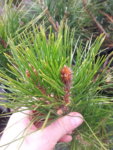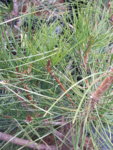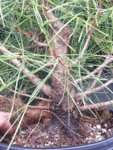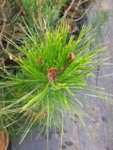'Jane Kluis' is the primary hybrid (densiflora x thunbergii) in that it is believed both parents were the nominal species
Something else, there is much discussion about JBP with red buds. This representing gene introgression, where off and on only the occasional hybrid between the two species occurs, just often enough that some traits of one species pop up occasionally in a population of another species. IE, the red bud cultivars of cork bark Japanese black pine. There is no doubt the red budded varieties are otherwise JBP, but the buds are red, a gene introgression trait from JRP somewhere in the ancestry of the JBP.
But the current binomial taxonomy is not equipped to handle modern population genetic species concepts. So it is just a thought, or point that does not need to change the way we do anything.





